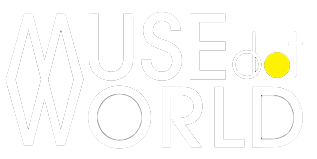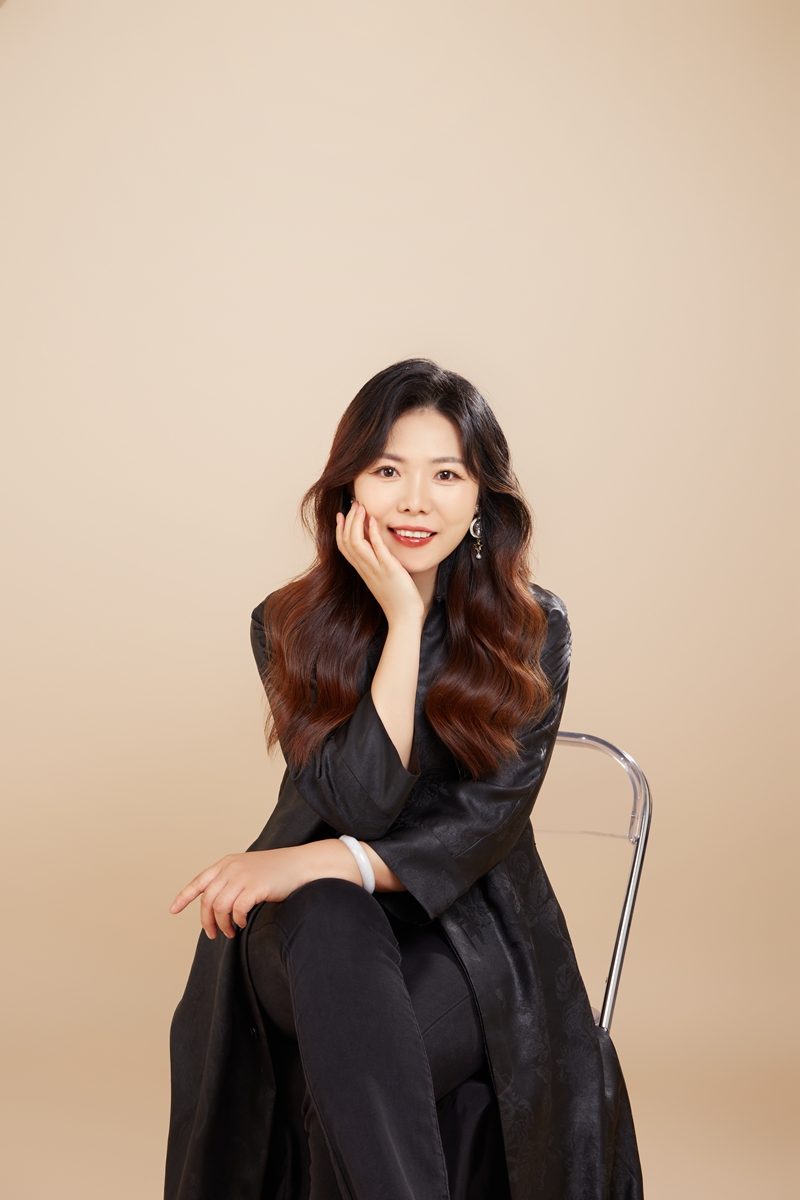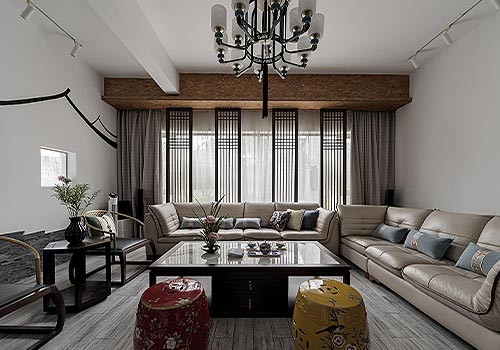Interview with Pei Yang of Suzhou Xinglai Architectural Design and Engineering Co.

The Influential Jurors of the 2023 LIT Talent Awards
September 5, 2023
Luxury Beyond Measure: Ritz-Carlton’s Nomad Haven
September 8, 2023Pei Yang
Pei Yang, previously Pei Yan, is a senior interior architect in China and the co-founder and art director of Suzhou Xinglai Architectural Design and Engineering Co, whose leadership has steered the team to accolades in numerous competitions.
Interview With The 2023 MUSE Design Awards Winner – Pei Yang
Hello! My name is Pei Yang (formerly known as Pei Yan), and I am an expert member of the China Europe International Design Association, a member of China Construction and Decoration Association, a member of Suzhou Decoration Association, a registered senior interior architect in China, as well as the co-founder and art director of Suzhou Xinglai Architectural Design and Engineering Co.
Outside, I try to serve each of my clients well, because I know that my clients are my parents, their preferences are the most important, and to give them the good life they want is also what I must pursue in life. I want to use what I have learned to help more customers and friends, but also to pass the design concept to the people who need it.
Internally I unite my colleagues, organize design learning and practice activities, help new designer members, designer assistants, interns, gather team spirit, make the team develop better, and also often lead the team to participate in national and regional competitions, while achieving excellent results; they are like my family. Success in a career needs the perfect combination of knowledge, perseverance, sweat and opportunity.
Likewise, the honor of a company needs to carry its carrier - the selfless dedication of people.
Here is a little Education Background of myself: I graduated from Suzhou Vocational University, Department of Environmental Art in 2012, and further studied in Shanghai Tongji University, Lighting Design in 2016.
In between 2007 - 2010, I served as a Lead designer of Jiangsu Red Ant Architecture & Decoration Design & Engineering Co. After that, I became the present Co-founder and design director of Suzhou Xinglai Architectural Decoration & Design Co. During 2015, I also started as the Art Director of Yishuxuan Soft Decoration Company, a subsidiary of Suzhou Xinglai Architectural Decoration & Design Co. until today.
My mother had a deep appreciation for painting and calligraphy, but due to the constraints of her time, she couldn't pursue it as she would've wished. As a child, while accompanying her in the fields, I would observe the unique beauty of nature, which inspired her to support my interest in painting. This passion eventually led me to the College of Art where I studied environmental art. During a research project on interior design, my classmates and I visited numerous homes and decoration markets. I noticed that many people, consumed by their hectic lives, settled for less than ideal living environments with inadequate facilities. This realization deeply impacted me. While I had been unsure about pursuing this major, this experience solidified my resolve to become not just an interior designer but an exceptional one, committed to bringing the concept of a beautiful life to the everyday individual.
Suzhou Xinglai Architectural Decoration Design & Engineering Co., Ltd, established in 2011, is a professional firm specializing in design alliances, construction management, and building materials partnerships. Our expertise lies in interior decoration design and construction for various spaces including homes, business clubs, offices, leisure and entertainment venues, boutique stores, and more. With an independent design research institute and a robust design alliance, we are dedicated to delivering professional and innovative design concepts, meticulous construction, strict project management, and quality service to craft scientific, comfortable, and personality-rich spaces for our clients. Since our inception, our designers have earned numerous design awards, and our company has gained industry recognition, becoming a member of the Suzhou Design Association and earning the title of "China's most influential brand among interior design institutions."
Since June 2011, I have held the position of Design Director (Chief Designer) at Xinglai Design. In this role, I oversee project organization and implementation from a designer's professional perspective. My responsibilities include project design planning, work assignment, and rule establishment. I focus on optimizing work distribution within the team by aligning tasks with team members' strengths, thereby enhancing work efficiency and quality. Our approach to staffing optimization prioritizes matching tasks with team members' strengths, resulting in improved efficiency, enhanced work quality, and reduced unnecessary overtime.
Throughout my tenure at Xinglai Design, I have led a team of designers in contributing to several significant projects. Key projects include Ziyu Garden Villa, Yongjing Bay Villa, Golf Garden, Landmark Aoyun Garden, Suzhou Fuyuan Villa, Kunshan Bacheng Tianlun Suiyuan, Zhonghai Dushu Island, Taihu West Mountain Resort Villa, Suzhou Industrial Park Technology Industrial Park, and more. These projects have not only generated substantial design fees for our company but have also been instrumental in meeting our annual output value targets. Additionally, they have provided valuable experience as we continue to undertake high-end design demands for villa projects and specialized park space designs.
As mentioned earlier, my choice of design stems from its inherent purpose—to meet the needs of others. It's important to distinguish between design and pure artwork; interior design, in particular, centers around assisting individuals in enhancing their quality of life, fostering personal artistic growth, and, most importantly, establishing an industry framework for problem-solving. Through design, we strive to not only create beauty but also construct a comprehensive ecosystem that addresses people's challenges and improves their overall well-being.
I appreciate all the aesthetically pleasing designs, but I have a preference for designs that have a practical foundation. In recent years, we've seen a surge in extravagant, sky-high designs, yet what we truly need are more down-to-earth design solutions. Design should always cater to the needs of people because a positive user experience is the hallmark of good design.
I recall encountering a remarkable piece of work not too long ago. I was so impressed that I decided to visit the location and explore it further. As I walked through the gallery, I felt like I had stepped into a realm of science fiction. However, my enthusiasm quickly turned to frustration when I accidentally bumped into what I thought was a wall at the end of the gallery, only to discover that it was, in fact, a mirror. The mirror's reflection had fooled me, and I couldn't help but feel the urge to lodge a complaint against the designer.
Some may argue that what makes a design good is its popularity, its unconventional and eye-catching appearance, or its alignment with current trends. However, in my view, when assessing design, we shouldn't merely rely on these superficial factors as our benchmarks. Instead, we should consider a holistic approach, drawing from fields such as architecture, ergonomics, aesthetics, geometry, mathematics, and other design-related disciplines. Moreover, in recent years, it's essential to factor in elements like artificial intelligence (AI) and user experience, as these play a crucial role in enhancing human life.
In essence, a successful design must be practical and applicable to real life, as its ultimate purpose is to serve people. It's the user's experience that truly defines what constitutes good design.
I frequently find solace in nature, where I engage in the observation and documentation of various natural elements, including mountains, rivers, peculiar rock formations, ancient structures, flowers, trees, birds, and animals. This immersion in the natural world serves as a means of relaxation and a wellspring of inspiration. Additionally, I enjoy sharing these experiences with three or five friends, often in historic and culturally rich streets and alleys. In these settings, we engage in observation, contemplation, and discussions, constantly seeking inspiration through our collective observations and reflections.
In these picturesque settings, characterized by pink walls, tiled roofs, captivating landscapes, pavilions, water features, stone fences, and charming flower-framed windows, one can witness the harmonious coexistence of architecture and nature. These elements encapsulate the essence of traditional Chinese gardens, offering a glimpse into a world where every aspect comes together in a harmonious blend. In such environments, "The tea room gathers friends with the fragrance of tea, and the music of the zither immerses us in the culture of Jiangnan." Chinese floor-to-ceiling windows bridge the interior and the courtyard, creating a closer connection to nature. These windows not only define the spatial scale but also cast poetic patterns with the incoming sunlight.
Standing on the terrace, gazing at the surrounding fence, and taking in the enchanting scenery, one can savor the fragrance of post-rain trees, momentarily forgetting the city's hustle and bustle. Instead, it's a return to the tranquility and expansiveness of nature, a space for boundless contemplation and reflection. In this picturesque setting, one can lose themselves in reverie and rediscover the essence of being in a garden.
First and foremost, before embarking on a design project, I have a strong inclination to immerse myself in nature, where I engage in the observation and documentation of various natural elements. This encompasses everything from majestic mountains and flowing rivers to peculiar rock formations, ancient architectural wonders, vibrant flowers, towering trees, and the diverse array of birds and animals. These excursions into nature serve as a source of relaxation and inspiration for me. Additionally, I cherish the opportunity to share this experience with a group of three to five friends, often exploring the historic streets and alleys steeped in cultural heritage. In these historical settings, we engage in deep contemplation, mutual discussions of our experiences, and the constant pursuit of the inspiration we seek.
Secondly, during the design process, my team and I conduct thorough site surveys and engage in extensive discussions with the client to understand their specific needs. We place a strong emphasis on fostering in-depth communication with our clients.
Thirdly, upon returning from the site visits, our team convenes for a group discussion to explore various design solutions. This includes the creation of hand-drawn sketches and computer-generated drafts, and we continue to refine our ideas through ongoing discussions.
Lastly, we use professional drawing software to transform our conceptual designs into concrete construction drawings and renderings, as well as developing soft furnishing and supporting plans to complete the final project package.
I hold a profound respect for my country and its rich cultural heritage. Throughout the design process, I am dedicated to preserving the essence of this heritage while also incorporating a modern sensibility that embraces the desire for simplified design. In essence, I aim to strike a balance that honors traditional customs and ways of life while acknowledging the evolving preferences and lifestyles of contemporary society.
First and foremost, I would like to express my heartfelt gratitude to the organizers for bestowing this prestigious award upon us. We hold this accolade in the highest regard, recognizing its significance not only for our company but also for me personally and our dedicated team. This award carries international recognition, which holds immense importance for us. It bolsters our confidence on the global stage, motivating us to steadfastly uphold the principles of authenticity in our design journey. It serves as a reminder to maintain the spirit of a craftsman, ensuring that we continue to create superior value for those in need.
The project is nestled in the heart of the Yangcheng Lake tourist resort, surrounded by five interconnected lakes: Yangcheng Lake, East Yangcheng Lake, Puppet Lake, Ba Cheng Lake, and Pheasant Lake. These natural wonders are complemented by villas, the Yangcheng Lake Water Park, Linhu Park, and Forest Park, forming a harmonious blend of green spaces.
My choice of this project, as previously mentioned, stems from my deep appreciation for traditional culture, which boasts a 5000-year history. This cultural heritage is not confined to China alone but serves as a global treasure that can offer insights into China and Chinese design.
In this design, traditional culture takes center stage, seamlessly merging ancient traditions with modern civilization while prioritizing human experience. The renovation approach emphasizes ergonomics, functional efficiency, and everyday convenience.
Within the living room, Chinese-style floor-to-ceiling windows bridge the interior and the courtyard, bringing nature closer and painting poetic patterns with sunlight.
On the terrace, one can bask in picturesque scenery and the post-rain fragrance of trees, escaping the urban hustle and bustle for a moment of tranquility and boundless reverie in the garden.
As we move through the dining room, kitchen, atrium, and staircase, we encounter a harmonious fusion of antiquity and modernity, reflecting a dialogue between ancient and contemporary civilizations and a melding of Eastern and Western cultures. This mirrors the inclusive attitude of modern life, seeking harmony and beauty.
Within the atrium, each moment presents a unique scene—the water and moonlit grottoes, symbolizing endless affection for loved ones, like an unending stream of love itself.
The villa is a two-story structure nestled within a Chinese garden. Its exterior features a balanced Chinese courtyard design. The windows exude a strong sense of tradition, distinct from the modern style with their emphasis on ample light and ventilation. The primary challenge we encountered in this project is a common issue faced by many villas—the ground floor corners tend to be damp and poorly lit. In our design approach, we addressed this challenge by incorporating a marble production process for the solid wood doors on the first floor. Additionally, we introduced skylights in the courtyard to combat the issues of dampness. The first-floor walls are now clad with natural cultural tiles, as depicted in the photo, creating an effective and aesthetically pleasing solution.
The award itself serves as a significant affirmation of my role as the lead designer. It also elevates my standing within the industry, garnering recognition not only for me personally but also within our company. Furthermore, it fosters increased trust from my team, solidifying their willingness to collaborate effectively.
What I appreciate most about the industry includes the following aspects:
1. Industry organization-led design tours.
2. Regular salon activities that facilitate knowledge exchange on industry developments.
3. Providing consultancy and management support to small and medium-sized design companies.
I firmly believe that, on one hand, it represents the culmination of culture and, on the other, the relentless dedication of our designers and the craftsmanship spirit, characterized by their fearless exploration and innovation.
The design industry is poised to encounter increasingly formidable challenges in the future. As society advances, the expectations for design continue to soar, ushering in an era marked by exceptionally high living standards. Present-day designers confront even loftier challenges, having navigated the transition from the era of rigid furnishings a decade ago to the era of soft furnishings five years back. Now, they grapple with the advent of whole-house customization in the early stages of the intelligent era. The design industry undergoes constant iteration, and the future of design will inevitably belong to the AI era. In this era, products must not only prioritize performance but also deliver an immersive user experience. Exciting times lie ahead, and we eagerly anticipate what the future holds!
If I were a student entering the industry, I would undoubtedly seek more opportunities for learning and growth, a space for advancement, and a creative environment devoid of rigid constraints. Designers thrive when they have the freedom to explore their creativity, as the adage goes, we yearn for captivating design souls, not cookie-cutter creations.
1. Learning and Training Resources
2. Competition Resources
3. Study Tour Resources
If I were to say - Probably that my first love was dumped, hahaha!
In life, my family's companionship is indispensable, and each moment spent with them sparks some degree of inspiration within me.
Design demands ongoing dedication and effort, with even the slightest hints of inspiration often arising from daily observations, contemplation, and knowledge accumulation. Therefore, if one aspires to attain notable accomplishments in their design endeavors, it is essential to invest in oneself.
I am an extremely determined individual. When it comes to completing a design, I am willing to burn the midnight oil. I continuously monitor industry trends and keep a close eye on what others are accomplishing. I persistently strive for awards and recognition, not only for myself but also for my family and the entire industry. I take my team on journeys across our nation to witness design achievements from north to south, as I believe this is a key factor in my success.
I extend my heartfelt wishes to the organizers and all the hardworking individuals out there. May the upcoming generation of young design talents find ever-greater success on their design journeys. Design has no shortcuts; it demands one's unwavering dedication and tireless effort to create a meaningful life. It's crucial to hold onto one's original passion and commitment to craftsmanship, as they are the constants that drive us forward!
Thank you to the organizers of the Muse Design Awards!
Winning Entry
Kunshan-Tianlun Suiyuan | 2023
The project is located in the center of Yangcheng Lake tourism resort, surrounded by five lakes naturally…
(Read more at MUSE Design Awards)
Pei Yang
Pei Yang, previously Pei Yan, is a senior interior architect in China and the co-founder and art director of Suzhou Xinglai Architectural Design and Engineering Co, whose leadership has steered the team to accolades in numerous competitions.
Read more about this interview with Yu Shan Shen of AUSIYA DESIGN, the Silver Winner of the 2023 MUSE Design Awards.


